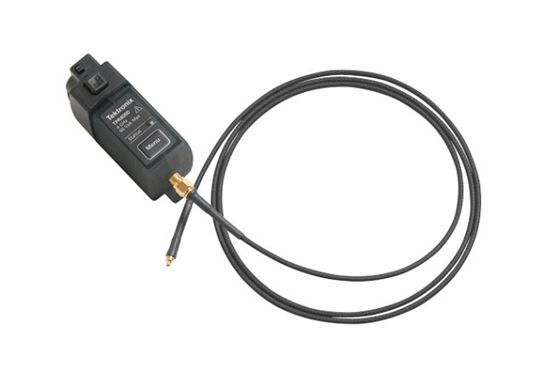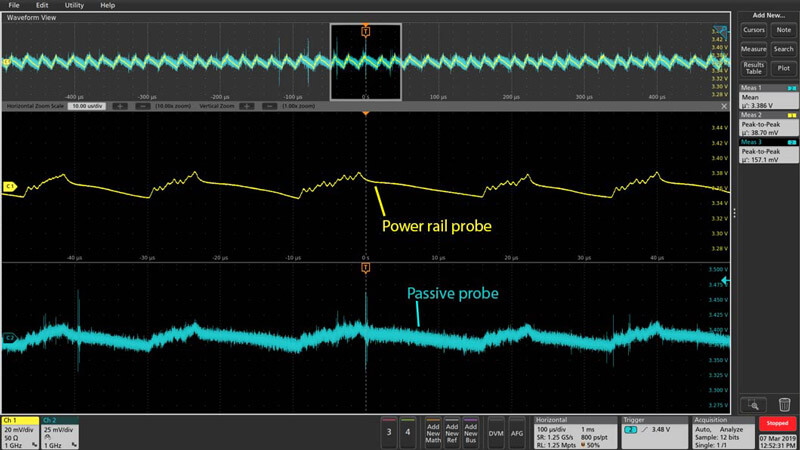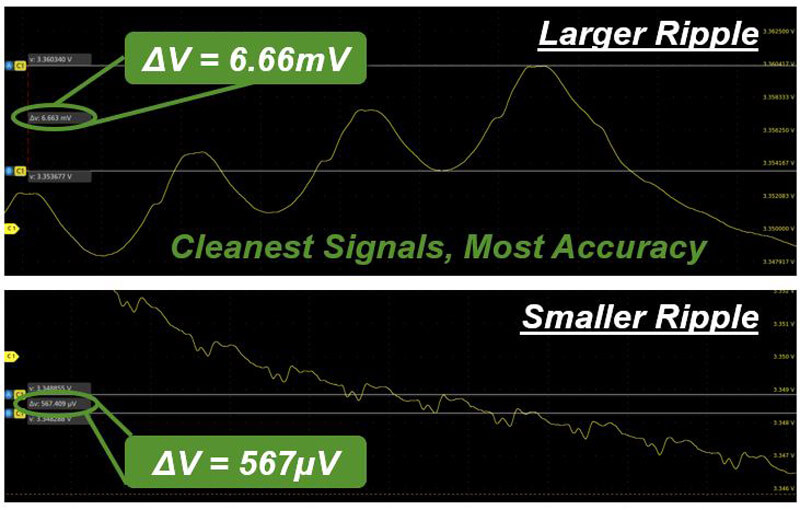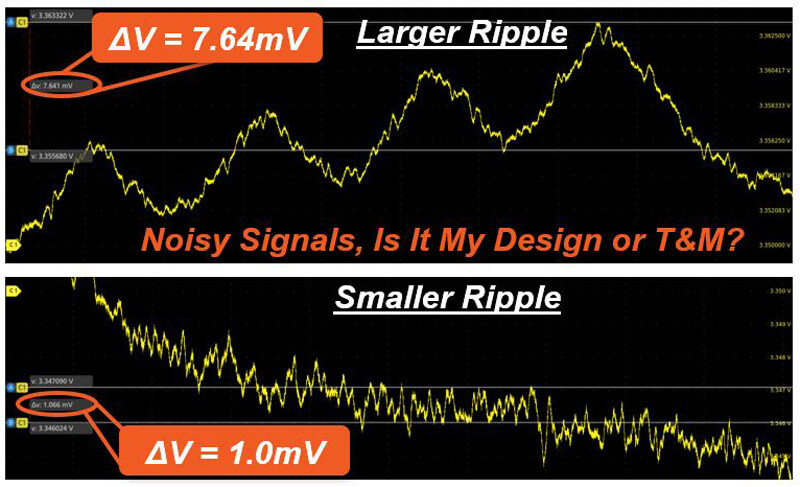
Why use a power rail probe over a passive or differential probe?
Traditional power integrity applications typically use passive or differential probes to measure power rails. The changing technology landscape means designers need higher accuracy ripple measurements with very fast transitions pushing into multiple GHz range. New design challenges call for new measurement equipment that can minimize noise from the measurement tools while also offering more bandwidth to see more signal content. The†ultra-low noise TPR1000/4000 power rail probe offers low loading for accuracy (especially in the most sensitive measurements) and offers low noise contribution and high bandwidth options.

The new power rail probe covers power rail transient events up to 4 GHz and offers offset voltage range of Ī60V to measure power supplies from plug, down to the pin of an integrated circuit. It also offers a wide dynamic range of Ī1V, which, on higher voltage rails, lets you look at droop on the line or when a lot of current is drawn by load or transients. Coupled with the right scope, this powerful combination means you donít have to worry if the noise you are seeing is from your test equipment or if youíre seeing aggressors in your system that you could never see before.

The above is a ripple measurement on 3.3V rail using the†power rail probe. Using 20MHz bandwidth limit and a 6 Series Oscilloscope, you can see the clean and most accurate signals coming from the power rail probe.

 Phase Control with Galvanic Isolation
Phase Control with Galvanic Isolation  De Itech IT6600C regeneratieve bi-directionele DC voeding
De Itech IT6600C regeneratieve bi-directionele DC voeding  New Phantom High Speed Camera Control software available
New Phantom High Speed Camera Control software available  SkelGrid 2.0: Flexible, Scalable, and Easy-to-Maintain with Integrated Master Controller and Modular Switchgear by Skeleton
SkelGrid 2.0: Flexible, Scalable, and Easy-to-Maintain with Integrated Master Controller and Modular Switchgear by Skeleton  Tektronix unveils SignalVu Spectrum Analyzer Software Version 5.4 for analysis of up to eight simultaneous signals
Tektronix unveils SignalVu Spectrum Analyzer Software Version 5.4 for analysis of up to eight simultaneous signals